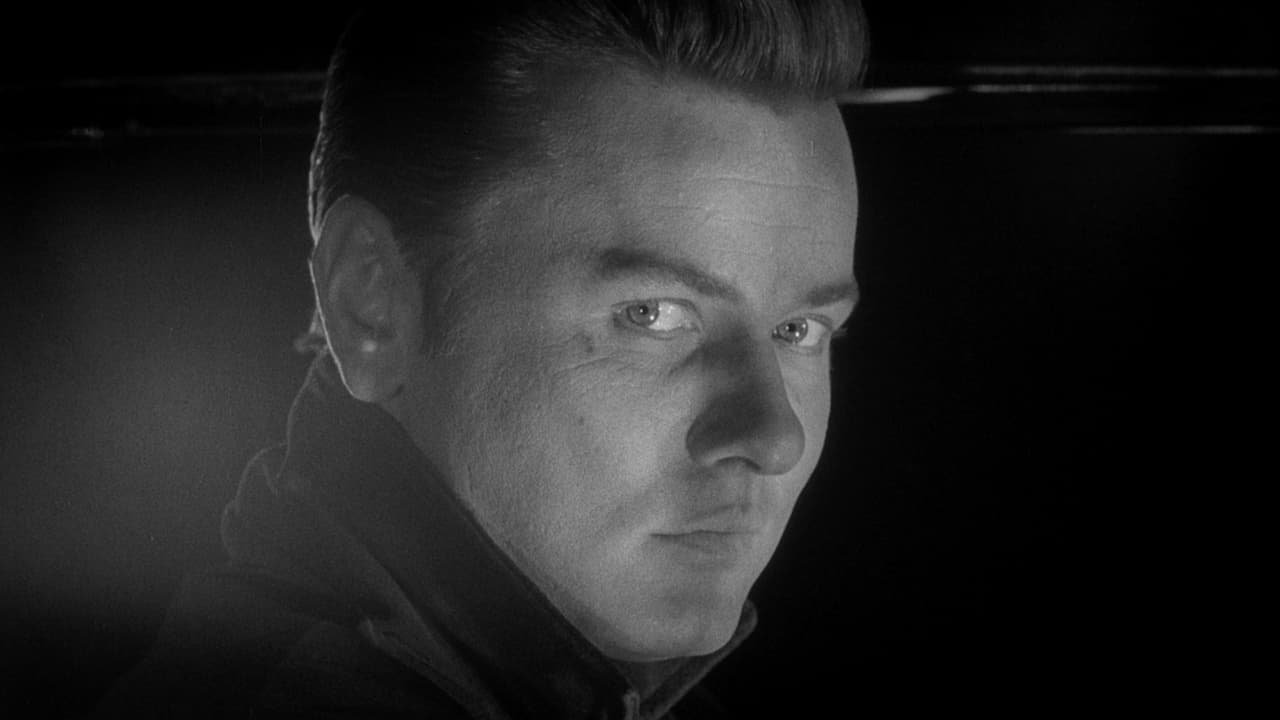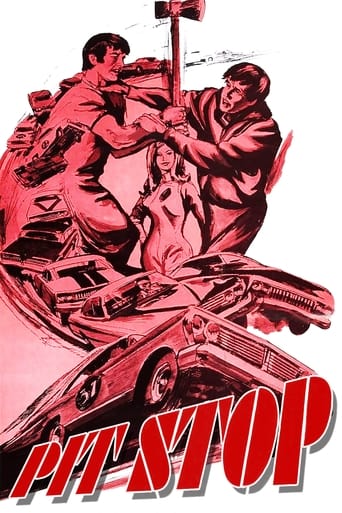

Pure and simple, "Pit Stop" is a car crash movie that happens to have a story attached to it. The figure eight track will quickly remind you of the dirt in your face racing that used to be. Richard Davalos plays sort of an anti-hero, taking advantage of situations that could work in his favor at the expense of others. Brian Donlevy really doesn't fit here, and acts as though he would rather be somewhere else. Meanwhile, Sid Haig steals the movie, and is definitely the most interesting character. Do not come into this with expectations beyond drive in fodder, and you will be pleasantly surprised. It moves along at a nice pace, and the race scenes are well done. If you enjoy car carnage , this is definitely one to seek out. - MERK
... View MoreFollowing work on a couple of Francis Ford Coppola films, directing a couple of cheapie's for Roger Corman, and the delayed but supremely stylish Spider Baby (made in 1964 but unreleased until 1968), man-of-many-talents Jack Hill turned his attention to figure eight racing for Pit Stop, aka The Winner. The subject repulsed the director, but Corman insisted and, during his research, Hill became fascinated by the attitudes of the death-wish men behind the wheels. So, although the topic is pure exploitation, Pit Stop is character- driven, following the exploits of the stoic Rick Bowman (a brooding Richard Davalos) and his increasing obsession with the thrill of the win and the dance with death in every race. As racing promoter Grant Willard (Brian Donlevy) says, a suicide is born every minute.Shot in grainy black-and-white, Hill employs European, guerilla- esque tactics to film the movie as effectively as possible, squeezing as much out of its obvious budget limitations as possible. It helps achieve a neo-noir atmosphere, heightening the gloom yet amping up the style. Modern racing films tend to be sleek and shiny, but Pit Stop is pure grit. The racing scenes, which consist mostly of footage of real figure eight racing, are insanely entertaining, with every crash, flip and slide unhindered by editing, special effects or stunt work. It puts movies like The Fast and The Furious (2001) to shame, as although said franchise is entertaining in its own right, as a movie depicting the sheer thrill of the race, Pit Stop puts it to shame.The performances are effective too. Davalos proves to be a charismatic "I play by my own rules"-type, hesitant at first, but eventually unable to resist the lure of the competition. Donlevy, Hammer's Quatermass, delivers reliable support, but the screen is inevitably chewed up and spat out by Hill regular Sid Haig as outlandish racing champion Hawk, putting his usual obnoxious redneck shtick to effective use. This being a Corman production, it often resigns itself to underdog genre tropes, but Hill's direction and screenplay means that there is always something more existential and cynical lurking beneath the surface. It may be one of Hill's lesser known works when compared to his exploitation classics Coffy (1973), Foxy Brown (1974) and Switchblade Sisters (1975), but it is certainly one of his best.
... View More"Pit Stop" feels like an amalgamation between modern day racing flicks "The Fast and the Furious" and "Days of Thunder", only this Jack Hill film is way, way WAY cooler, of course. Perhaps the aforementioned movies benefice from higher budgets, greater names in the cast and far more impressive (to teenage audiences, at least) car turning gimmicks, but both the characters and the actual racing footage in "Pit Stop" are genuinely more plausible and convincing. Regular race tracks are for pansies now, by the way, as Jack Hill introduces the Figure Eight Race Track! As its name implies, the track is shaped like an eight with a dangerous intersection in the middle and, the more the race gradually evolves, the harder it becomes for the drivers to avoid accidents. The plot centers on big shot Grant Willard (no less than Prof. Quatermass himself Brian Donlevy in his last film role) who sponsors young & reckless drivers and deliberately forces up the competition and hostility between them. Willard picks up the handsome and talented Rick from a vile street race and challenges him to defeat the reigning champion and ill-tempered Hawk. The competition between the two racers mutually and between them and the ultimate racing champ Ed McLeod becomes increasingly unbearable and even continues outside the racing tracks, as the men also share a romantic interest in the same women. "Pit Stop" is possibly Jack Hill's most ambitious and intellectual accomplishment as a director to date! Surely his more famous films like "Coffy", "Switchblade Sisters" and "The Big Doll House" are more sensational and easier to categorize as exploitation, but this film is stylish, involving and very realistic. The Figure Eight track was for real and most of the races exist of authentic footage and actual crashes interlarded with obviously fake images of Sid Haig and Richard Davalos pulling crazy faces and grotesquely turning a steering wheel. The character drawings are extremely legit as well, since the racers are depicted as obsessive and one-track-minded daredevils and their women as caring and supportive groupies that pray every race will have a happy ending. The performances are amazing, with a very young Ellen Burstyn in one of her first film roles after a lot of TV-work and Sid Haig portraying yet another delightfully freakish character. The film does run a little long and some of the padding buggy-racing footage in the desert, albeit spectacular, could have easily been cut a little. Jack Hill was also responsible for his own great editing and Austin McKinney's black and white cinematography is terrific. Highly recommended in case you're looking for a REAL cinematic highlight, rather than to watch Vin Diesel's big shiny bald head in a hideous car or Tom Cruise pretending to know anything about NASCAR driving.
... View MoreRecently I watched for the first time Peter Bogdanovich's highly acclaimed "The Last Picture Show". And while watching it, this movie, made only a few years earlier by Jack Hill, came to my mind immediately. Ever since I wonder why I find The Winner so much superior.The Winner has a similar setting and a story with similar protagonists like Picture Show. Both have Ellen Burstyn. Somehow The Winner is very direct. I suppose that whereas Picture Show was intellectual to the point of resembling a theses on film theory, The Winner shows the artisan's approach. It goes to your heart, not to your brain. I could not explain how it is done technically, but it is very effective.Although apparently a "cheapie", The Winner is made by good professionals. The story is simple but coherent, straightforward and always entertaining. The acting performances are convincing throughout; there is screen veteran Brian Donlevy, the most peculiar of all "naturals" and definitively one of my all time Hollywood favorites, playing the type of the greedy sports manager. "Cheapie"-star Sid Haig plays a bad boy with appropriate cartoonish zeal, the same can be said of the performance of "the chick", played by Beverly Washburn. The main character, a young racing enthusiast, is presented like a junk yard gladiator: taciturn, brooding and determined - "existentialistic". It all fits. Ellen Burstyn's low-key performance as a racer's wife is extremely touching - her part again compares favorably with the Oscar winning one in Picture Show.The black and white fotography is excellent, there is a long, almost dreamlike sequence of dragster cars making artful figures in the sand dunes. The soundtrack is fantastic and a good early example of heavy rock music. This is an artful portrait of American provincial youth just before the hippy movement started.
... View More